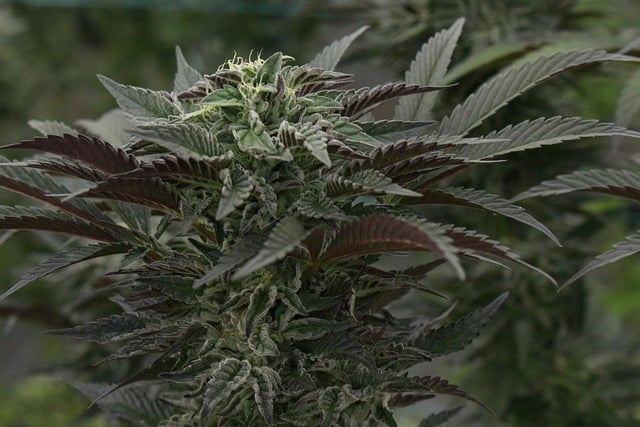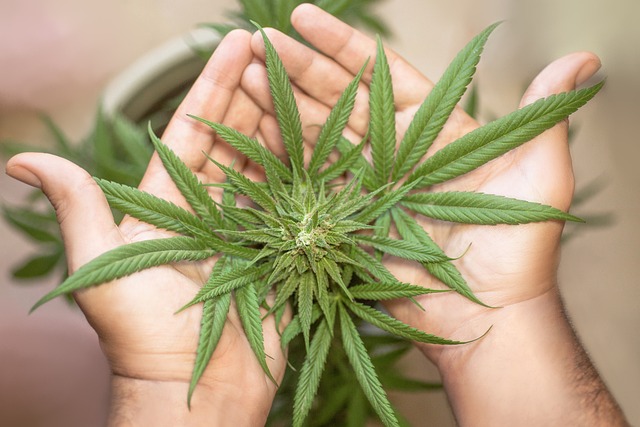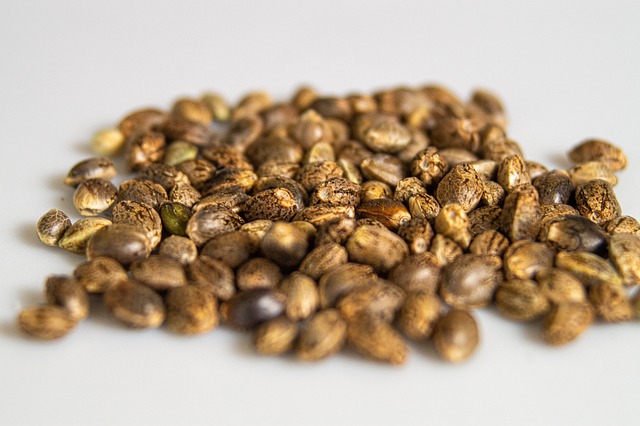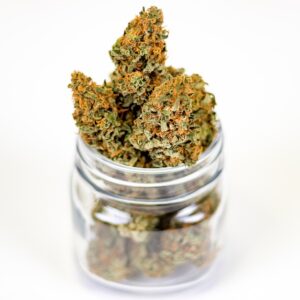
Laboratory analyses have shed light on the therapeutic potential of THCA flower, a non-psychoactive precursor to THC, through detailed reports that dissect its complex cannabinoid and terpene profiles. These studies highlight the analgesic, anti-inflammatory, and anxiolytic properties associated with myrcene, limonene, and caryophyllene found in THCA flower. Consumer experiences have been largely positive, noting benefits for pain management, stress relief, and mood enhancement. It is crucial for individuals to consult healthcare professionals before using THCA flower due to potential side effects and interactions with other substances. The lab reports offer a scientific basis for understanding the health implications of THCA flower consumption, detailing its cannabinoid composition and assessing for contaminants. These reports are instrumental in enabling informed decisions by providing accurate data on product quality and safety, advocating for safe and responsible use within the cannabis community. By combining objective lab report findings with subjective user experiences, consumers can gain a comprehensive understanding of THCA flower's effects and potential side effects, ensuring they are well-informed about both the scientific evidence and real-life testimonials.
exploration into the medicinal and therapeutic properties of cannabinoids has been a significant focus within scientific research. Among these, Tetrahydrocannabinolic Acid (THCA) has garnered attention due to its potential health benefits. However, understanding the side effects associated with THCA flower consumption is crucial for safe usage. This article delves into the latest findings from lab reports on THCA flower, elucidating its effects and safety considerations through a scientific lens. We will analyze the data, interpret user experiences, and navigate the potential risks involved in using this cannabinoid-rich compound. Join us as we uncover the science behind THCA flower lab reports to inform users and guide responsible consumption practices.
- Unraveling the Effects of THCA Flower: An Analysis Based on Lab Reports
- The Science Behind THCA Flower Lab Reports: Potential Side Effects and Safety Considerations
- Navigating the Risks: Interpreting Lab Data on THCA Flower Side Effects and User Experiences
Unraveling the Effects of THCA Flower: An Analysis Based on Lab Reports

Laboratory analyses have shed light on the pharmacological properties and potential effects of THCA flower, a non-psychoactive precursor to delta-9-tetrahydrocannabinol (THC), the primary psychoactive component of cannabis. The THCA found in the flower is of particular interest due to its therapeutic potential as indicated by various studies. These lab reports provide detailed insights into the cannabinoid and terpene profiles, which are crucial for understanding the effects of THCA flower consumption.
The preliminary findings from these lab reports suggest that THCA flower may offer a range of benefits without the psychoactive effects associated with THC. The presence of certain terpenes, such as myrcene, limonene, and caryophyllene, can influence the analgesic, anti-inflammatory, and anxiolytic properties attributed to this cannabinoid. Users have reported positive experiences in areas such as pain relief, reduced anxiety, and improved mood, though individual responses may vary. It is essential for consumers to consult with healthcare professionals before incorporating THCA flower into their wellness routine, considering the potential side effects and interactions with other medications. The lab reports serve as a foundational resource for a data-driven approach to understanding the true impact of THCA flower on health and well-being.
The Science Behind THCA Flower Lab Reports: Potential Side Effects and Safety Considerations

Laboratory analyses of THCA (Tetrahydrocannabinolic Acid) flower are crucial for understanding the potential effects and safety profile of this cannabinoid-rich substance. THCA is the precursor to THC (Tetrahydrocannabinol), the psychoactive component found in cannabis, but it exhibits distinct properties in its own right. THCA flower lab reports provide insights into the concentration of THCA and other cannabinoids, terpenes, and residual solvents that could influence its effects.
While THCA is non-psychoactive, its transformation into THC upon heating or decarboxylation can lead to different experiences. Consumers should be aware of the potential side effects associated with THCA flower consumption, which may include anxiety, paranoia, or altered mood, particularly in higher doses or for those sensitive to cannabis compounds. The onset and intensity of these effects can vary greatly depending on individual physiology, dosage, and method of administration. Safety considerations are paramount, as THCA flower lab reports also examine the presence of potential contaminants like pesticides, heavy metals, or mycotoxins that could pose health risks. Users should always source high-quality, laboratory-tested products to minimize adverse effects and ensure a safer consumption experience. It is the detailed information provided by THCA flower lab reports that enables users to make informed decisions about their use, thereby promoting both safety and responsible consumption practices within the cannabis community.
Navigating the Risks: Interpreting Lab Data on THCA Flower Side Effects and User Experiences

When exploring the effects of THCA (Tetrahydrocannabinolic Acid) flowers, it’s crucial to examine both the scientific data from lab reports and the anecdotal evidence provided by user experiences. Lab reports on THCA flower offer a detailed analysis of the compound’s potential side effects, which can include dizziness, paranoia, or anxiety in some individuals. These reports provide quantitative measurements of cannabinoid concentrations and terpene profiles, helping to elucidate the mechanisms behind these reactions. It’s through this scientific lens that we can better understand the risks associated with THCA flower consumption.
User experiences further complement this understanding by offering qualitative insights into the subjective nature of THCA’s effects. These personal accounts often highlight nuances not captured in lab data, such as individual sensitivity, environmental factors, or product quality variations. By synthesizing both the empirical findings from lab reports and the rich, firsthand accounts from users, one can navigate the complex landscape of THCA flower side effects with a more informed perspective. This dual approach ensures a comprehensive view of potential adverse reactions, enabling consumers to make educated decisions about their use of THCA flowers.
In reviewing the available thca flower lab reports, it is clear that while the therapeutic potential of THCA flower is a subject of growing interest, careful consideration of its side effects and safety profile is paramount. The scientific examination of user experiences and laboratory findings presents a nuanced understanding of its effects. As with any substance, the decision to engage with THCA flower should be informed by comprehensive lab data and personal health considerations. Users are advised to approach THCA flower with caution, adhering to dosage guidelines and consulting healthcare professionals where appropriate. The discourse surrounding this topic underscores the importance of ongoing research and responsible use based on verified thca flower lab reports.







